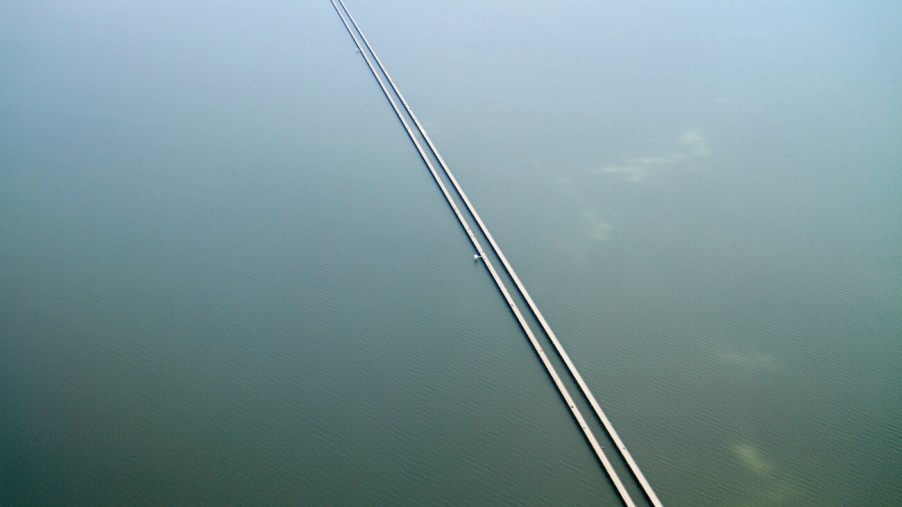
The Vibes of This Bridge in Louisiana Are So Off
The Bayou State is the beating heart of Southern Gothic. Horror luminaries from Faulkner to Rice to Poppy Z. Brite have strip-mined Louisiana for inspiration. Every year, macabre-minded tourists from all over the world descend like doom-laden crows to exult in the state’s sheer spook factor. Fireflies! Voodoo! Old French architecture and above-ground graves! It’s almost cliche. Seriously, though – just what is going on with driving on Lake Pontchartrain Causeway?
American bridges (and the ghosts that love them)
Americans love a spooky bridge. Small bridges pick up ghost stories from the communities they serve. Large bridges are often marked by real tragedies: accidents, natural catastrophes, and more. In the end, however, all but the most dedicated believers acknowledge ever-boring reality: it’s just a road that goes over a thing. There’s nothing weird going on with American bridges that doesn’t also happen everywhere else.
Per Britannica, there are six basic types of bridge: beam, truss, arch, suspension, cantilever, and cable-stayed. America has all of the above. Picturesque-covered bridges in New England and lonely arches in the Smoky Mountains aside, most American bridges are fairly modern, built to serve the bigger cities and denser traffic that arose after World War II.
Lake Pontchartrain Causeway fits right in. Completed in 1969, the Causeway is a trestle bridge – basically, a bunch of short beam bridges stuck together on top of rigid supports – traversing the lake to link New Orleans and the mainland. On paper, the Causeway is most noteworthy for its length: Guinness calls it the world’s longest continuous bridge over water.
Nothing to fear with the Lake Pontchartrain Causeway?
In practice, Lake Pontchartrain Causeway is also notable for wigging out visitors. There are real concerns: both the Causeway and the lake have plenty of traffic, which has led to tragedy. In 1964, the direct predecessor of the Lake Pontchartrain Causeway, a slightly shorter span in virtually the same place, was torn nearly in half after a collision with two barges. The New York Times reports that, before traffic could be stopped, a bus fell into the gap. Six passengers drowned.
Since the opening of the new Lake Pontchartrain Causeway in 1969, however, the bridge has done its job. It even weathered Hurricane Katrina, suffering some structural damage but causing no casualties.
What really haunts drivers on Lake Pontchartrain Causeway is less rational than questions of civil engineering. There’s just not enough to the Causeway to be comfortable. American motorists are used to reinforcement; bridges have cables, towers, and tall walls. “Stuff,” in short. To an American eye, a bridge needs stuff to hold it up.
Thanks to that simple trestle design, Lake Pontchartrain Causeway has no stuff. From a driver’s perspective, the Causeway is just a road, unaccountably cutting straight across the surface of a large and brooding lake.
Some things just feel wrong.
But, for most, that’ll be the extent of it because people have places to go and things to see.



